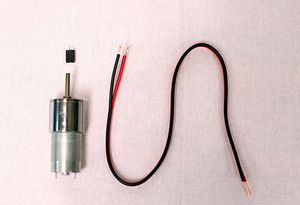Gear Motors
Gear Motor is a commonly used term that designates a hoist that derives its lifting and lowering power from a mechanical setup involving a gear set and pneumatic or electric motor.As the name implies, a gear motor or geared motor is a motor having an attached gear assembly. The gear assembly or gear train enable the gear motor to provide greater torque at a lower RPM than the motor alone would be capable of providing.
That is,gear motor refers to a combination of a motor plus a reduction gear train. These are often conveniently packaged together in one unit. The gear reduction or gear train reduces the speed of the motor, with a corresponding increase in torque. Gear ratios range from just a few to huge. A small ratio can be accomplished with a single gear pair, while a large ratio requires a series of gear reduction steps and thus more gears. There are a lot of different kinds of gear reduction.
In the case of a small transmission ratio N, the unit may be back drivable, meaning you can turn the output shaft, perhaps by hand, at angular velocity w and cause the motor to rotate at angular velocity Nw. A larger transmission ratio N may make the unit non-back drivable. Each has advantages for different circumstances. Back drivability depends not just on N, but on many other factors. For large N, often the maximum output torque is limited by the strength of the final gears, rather than by N times the motor's torque.
